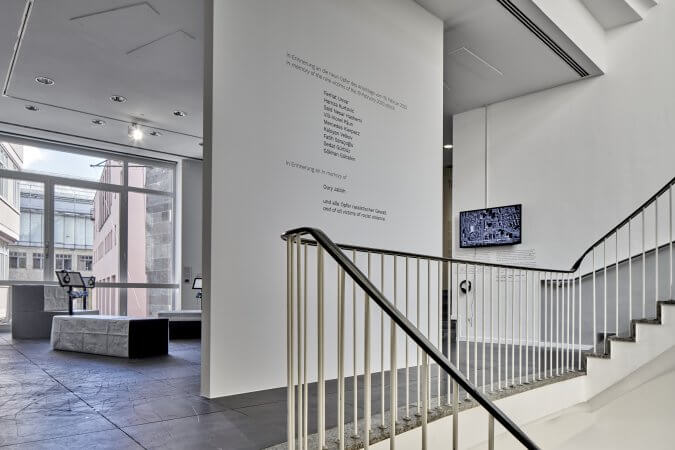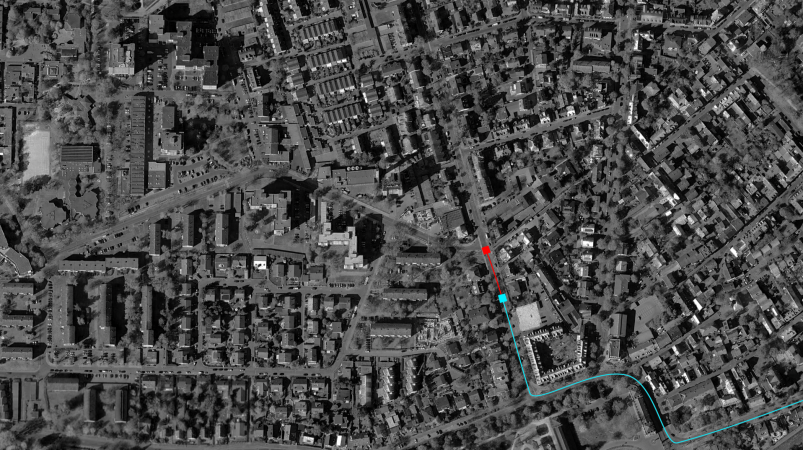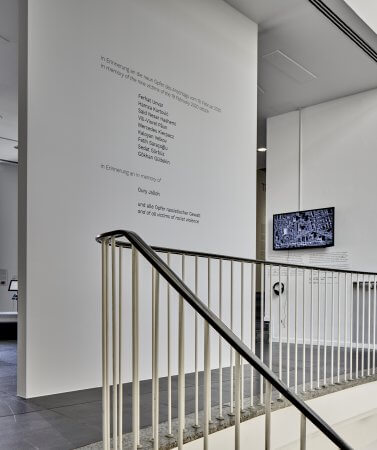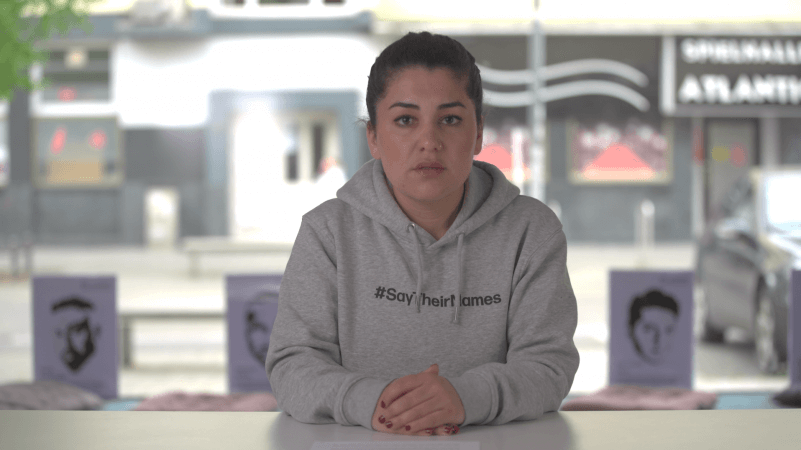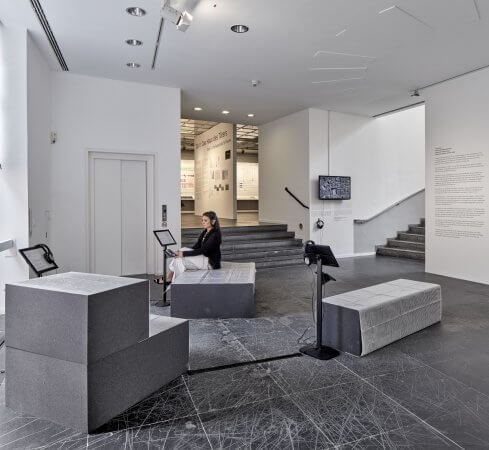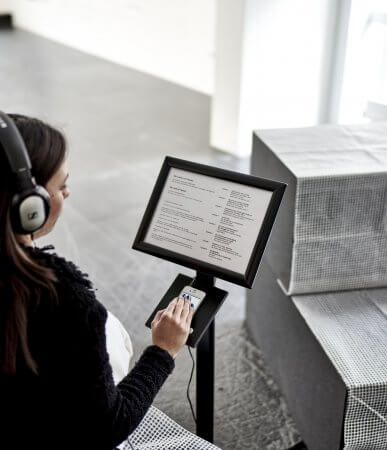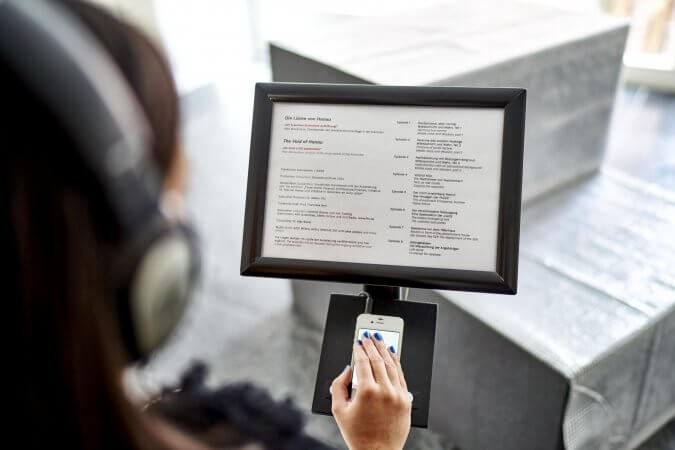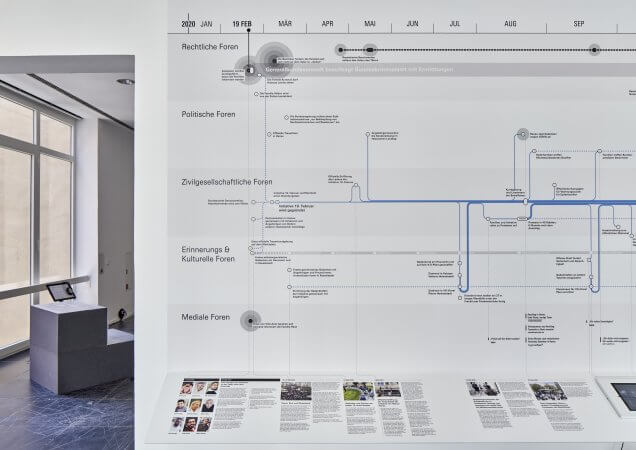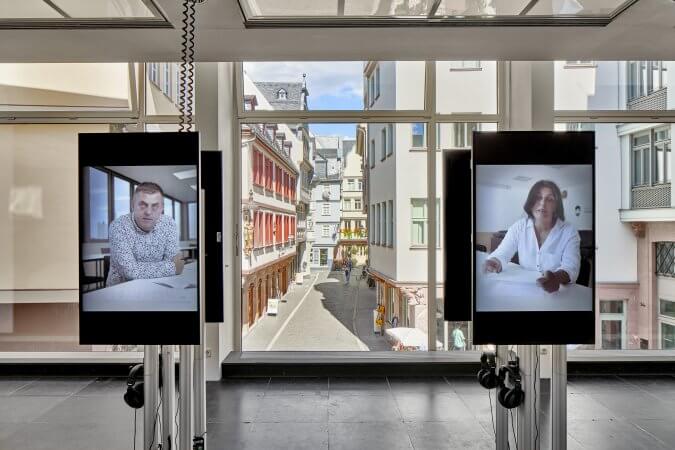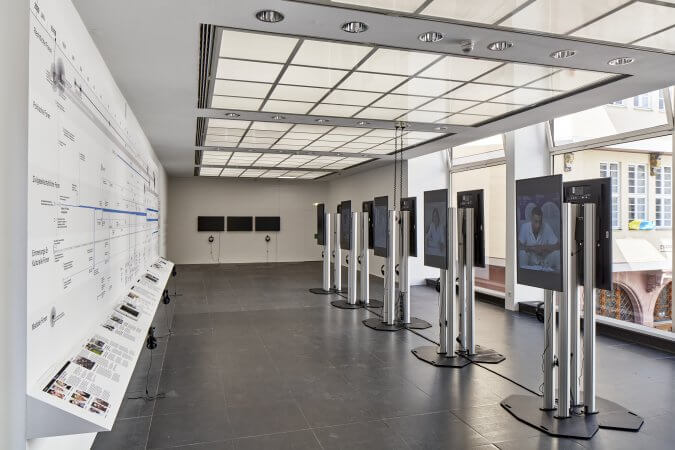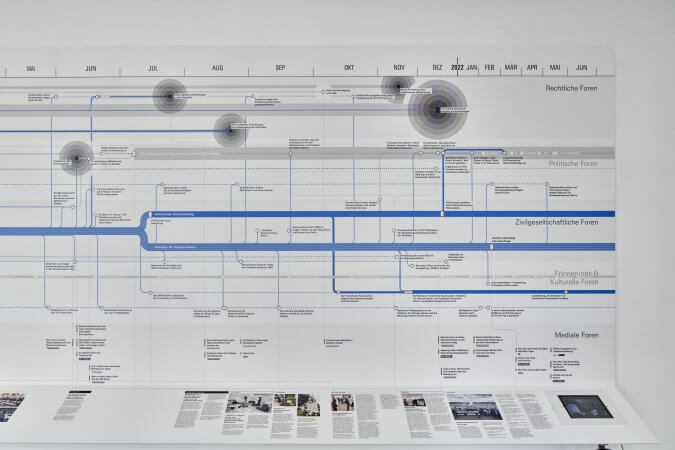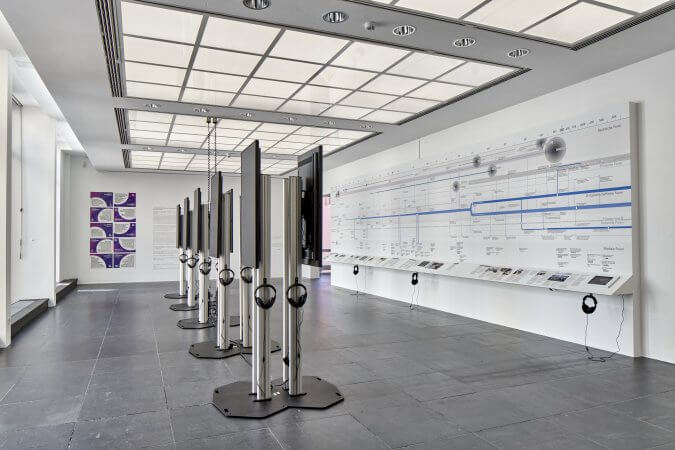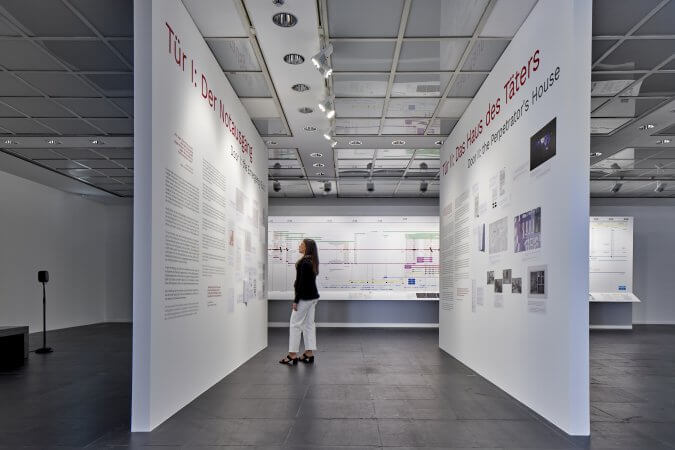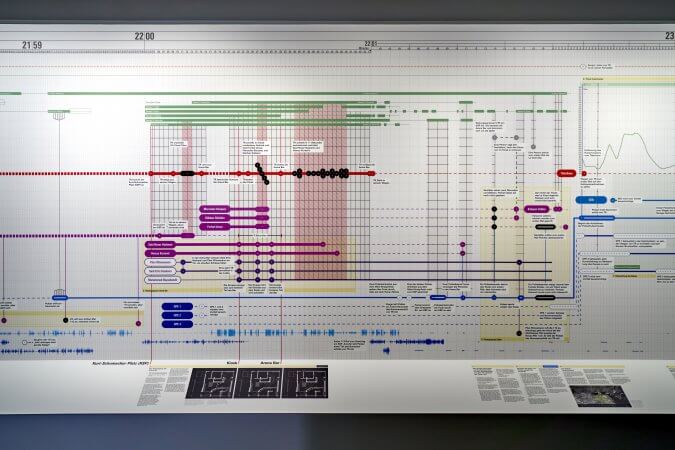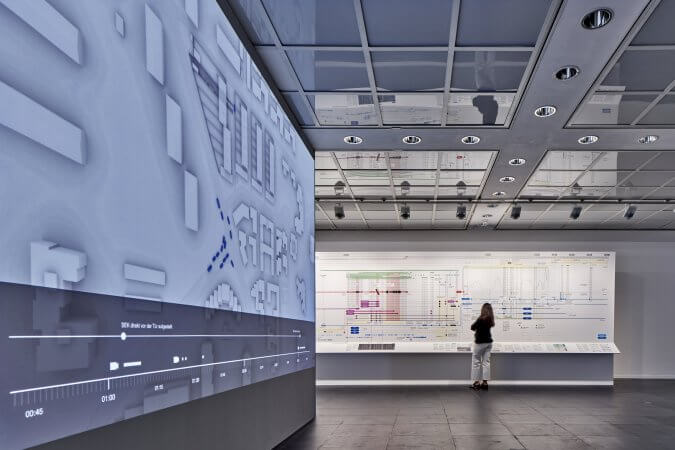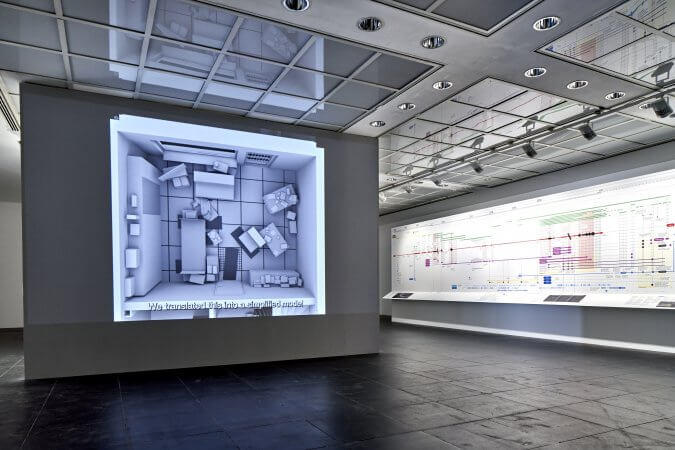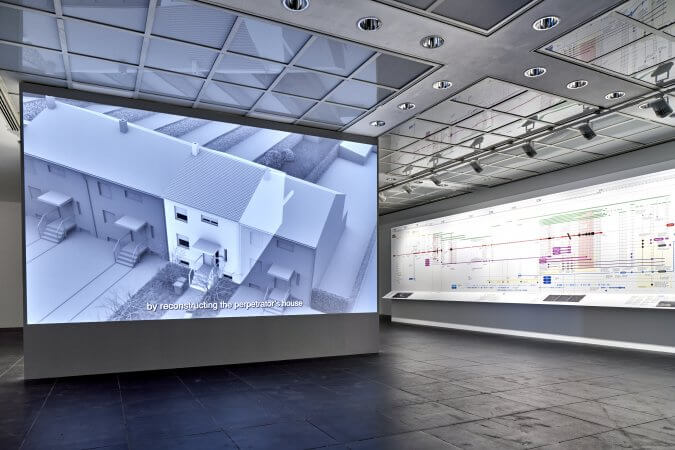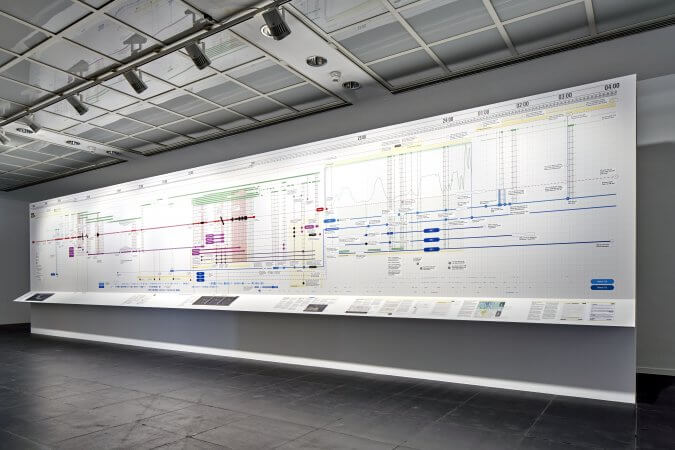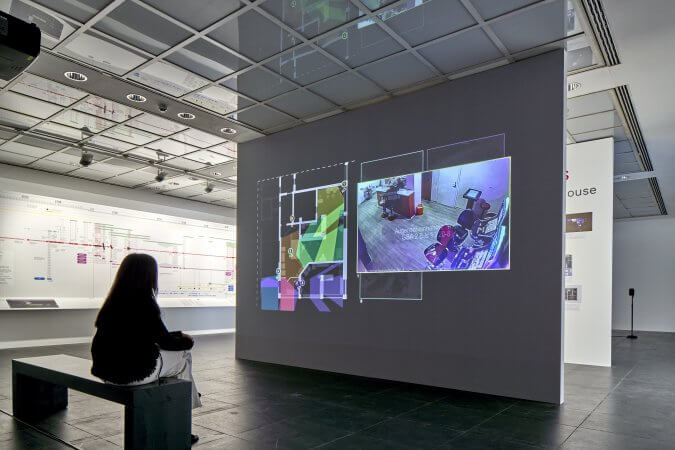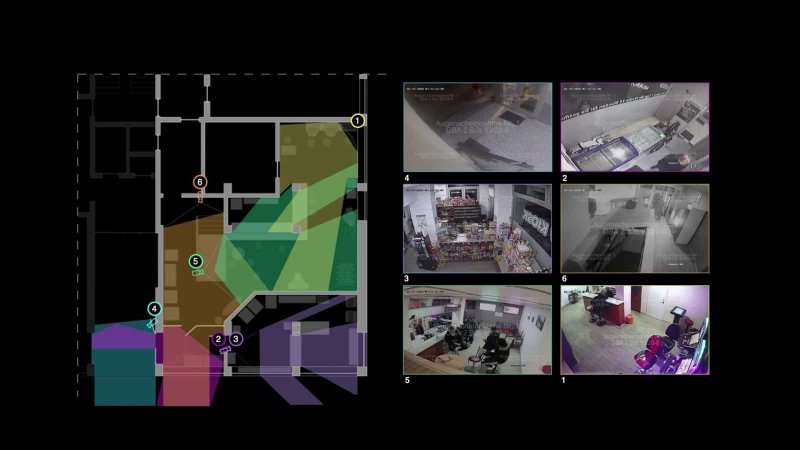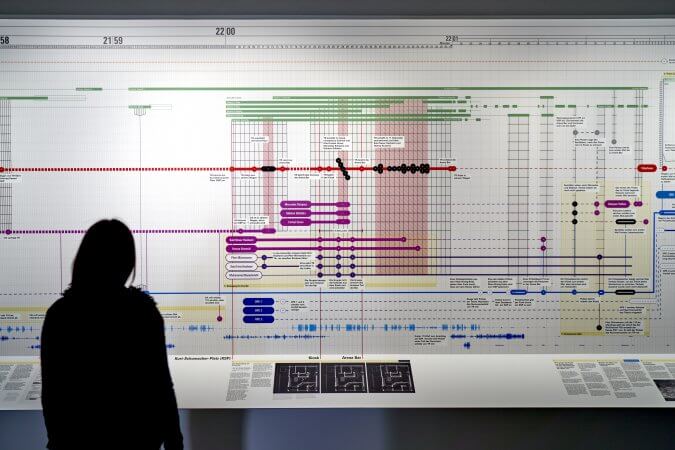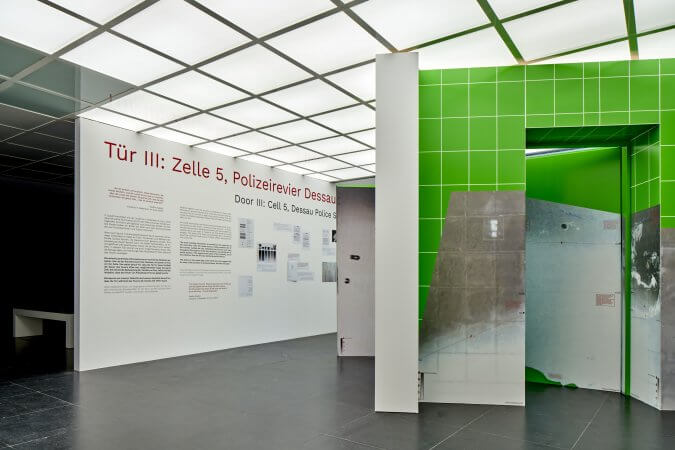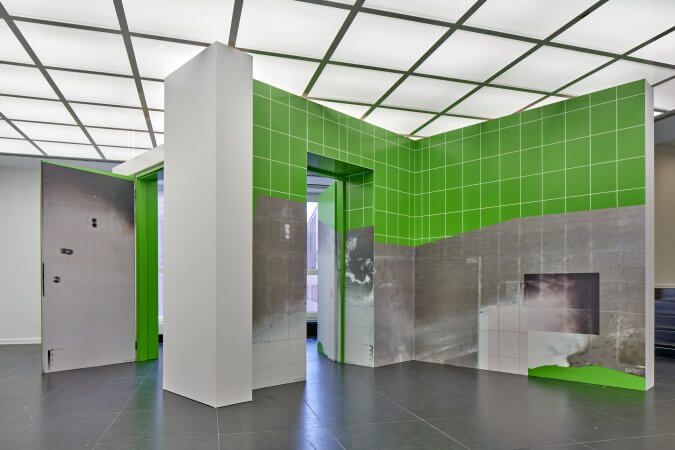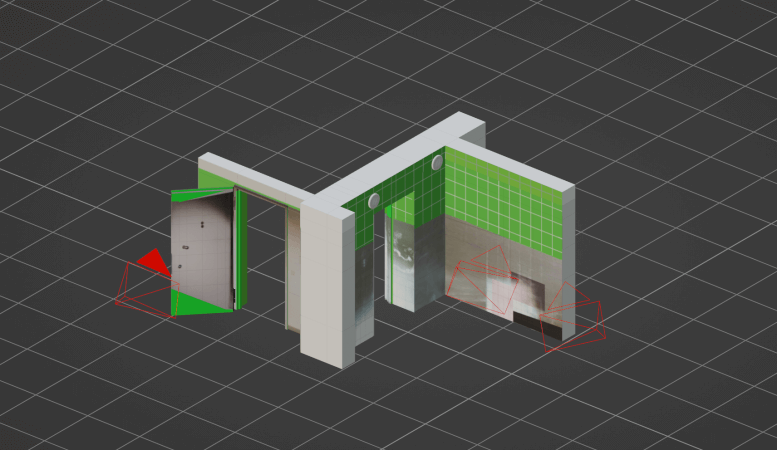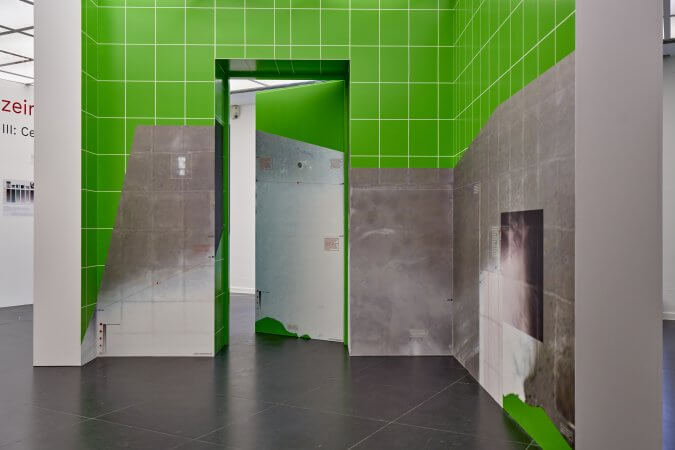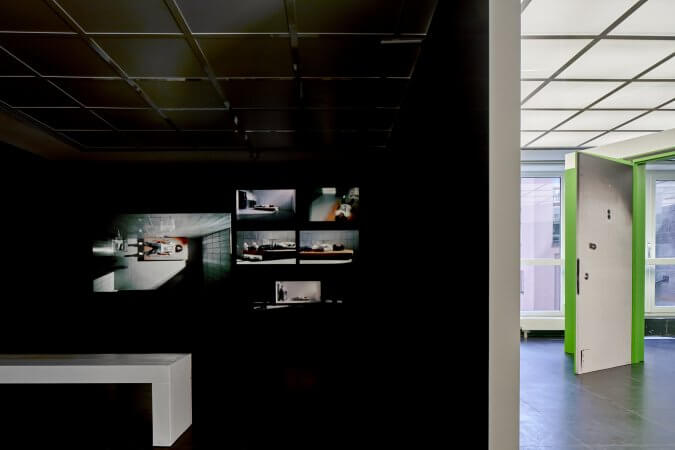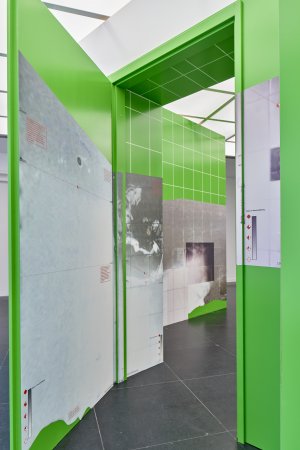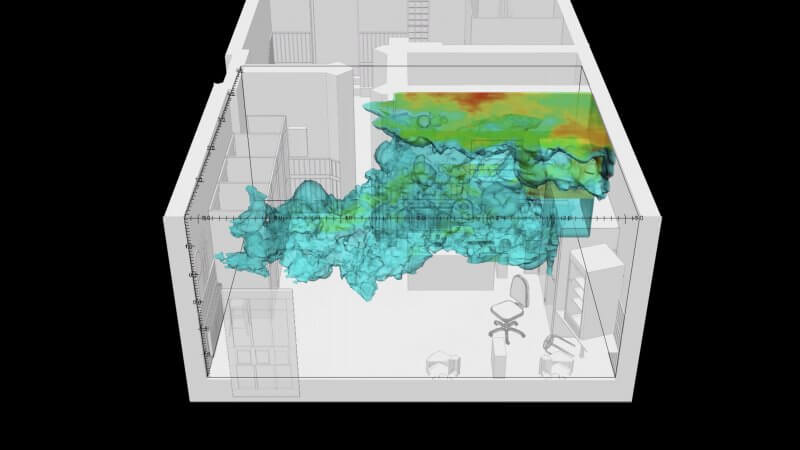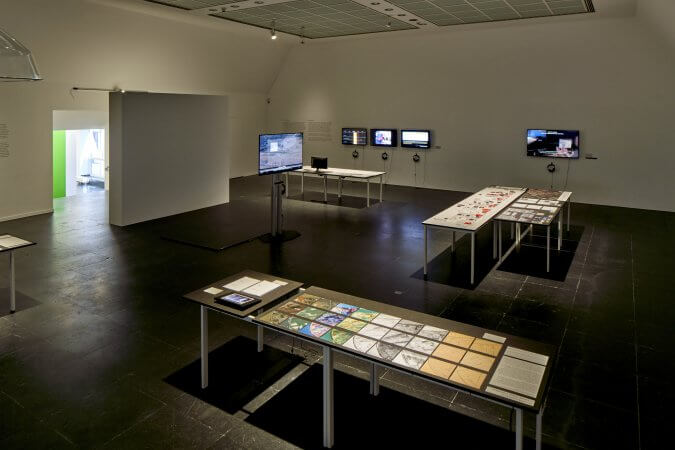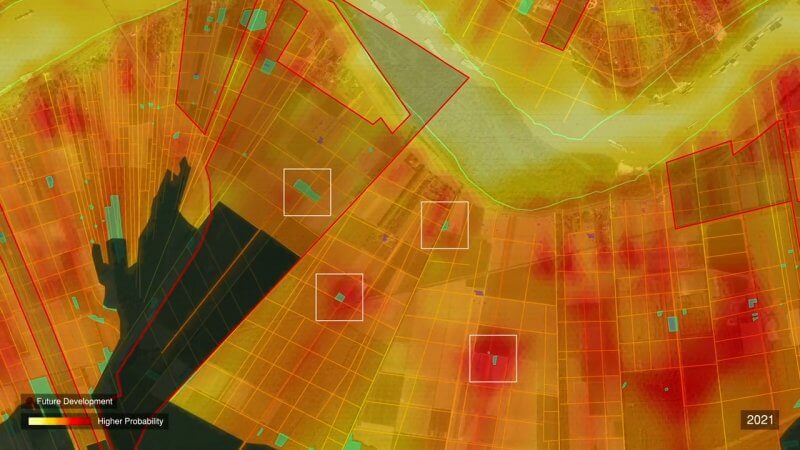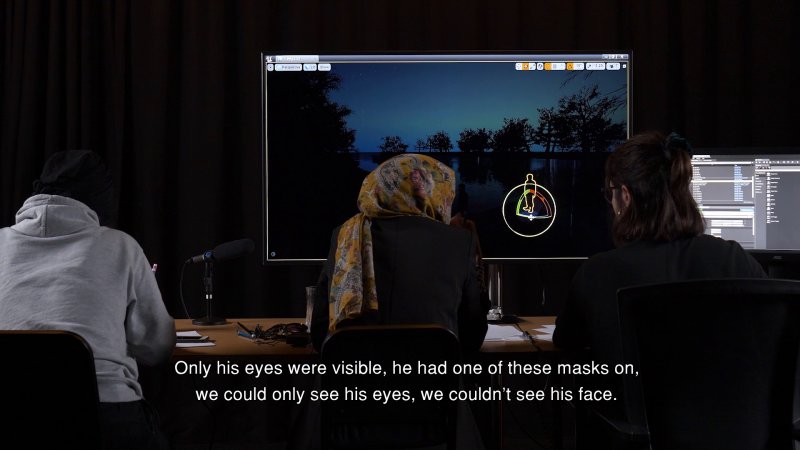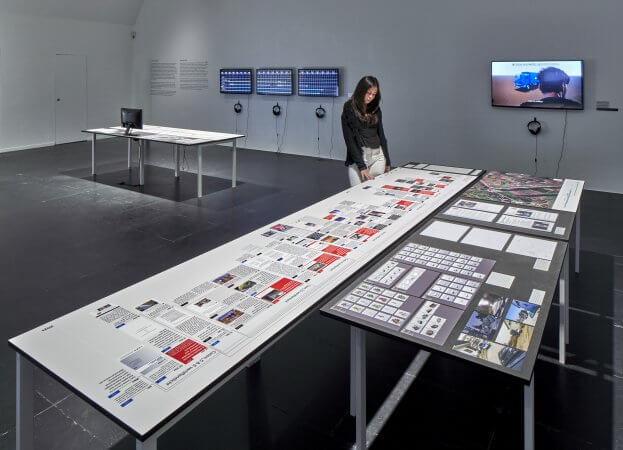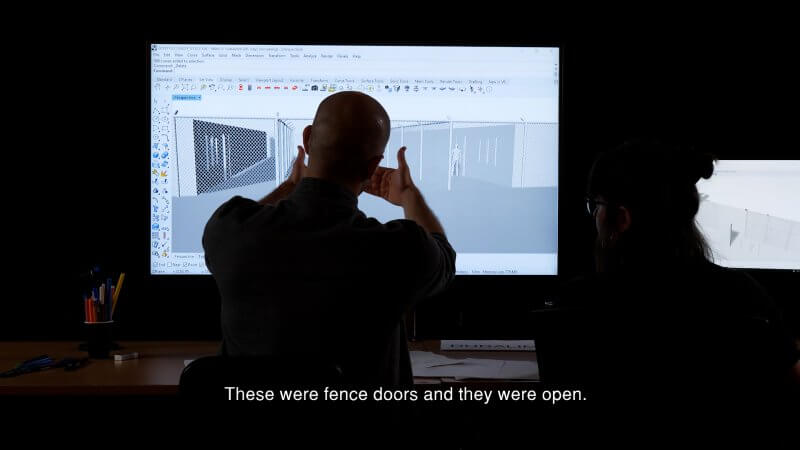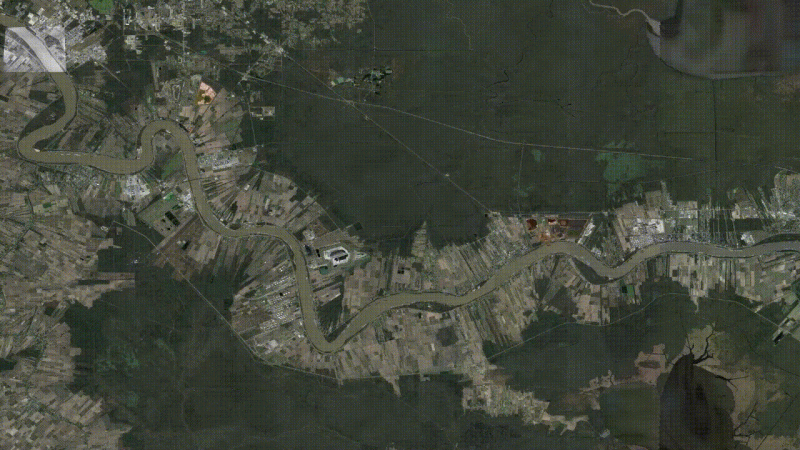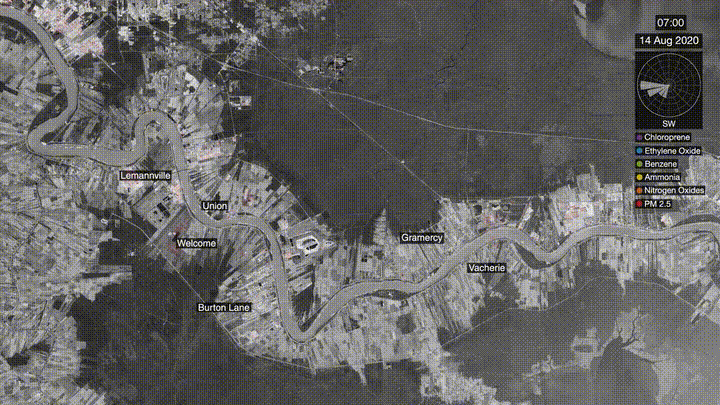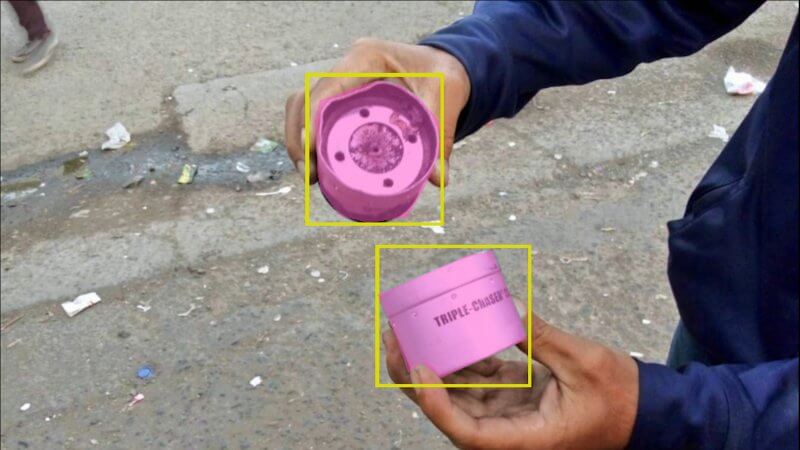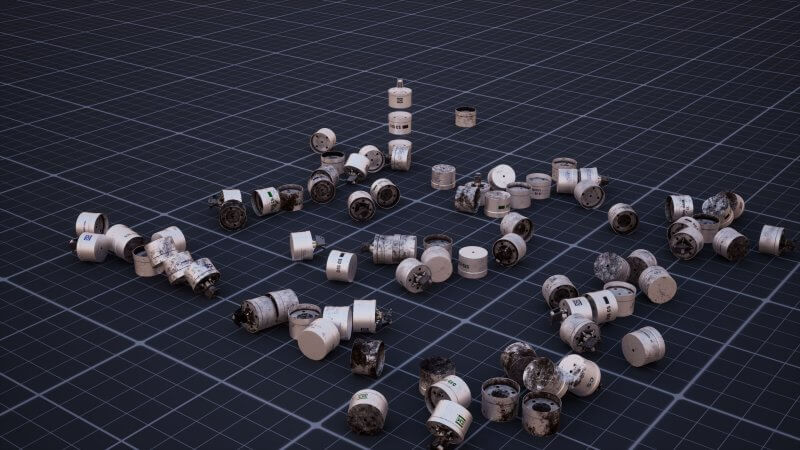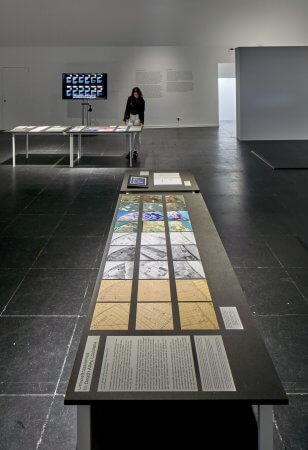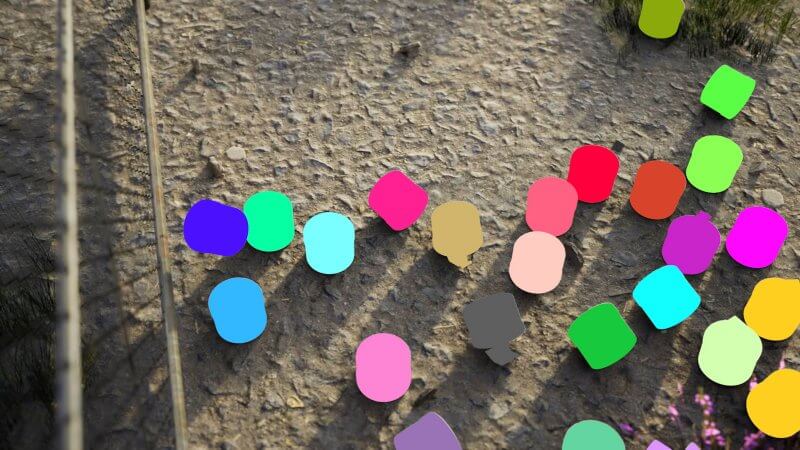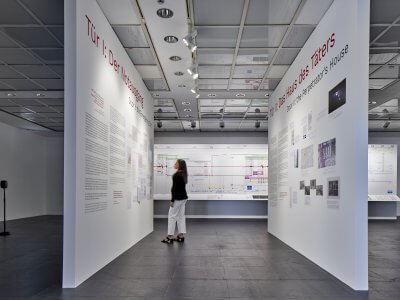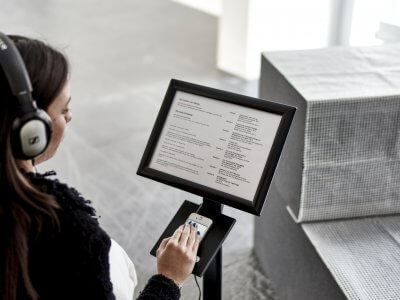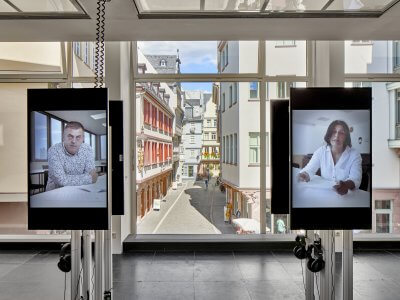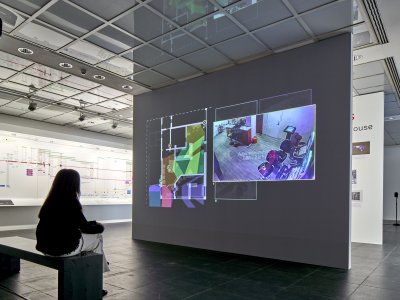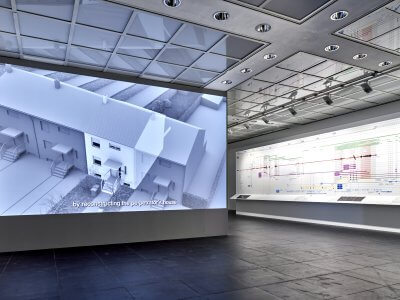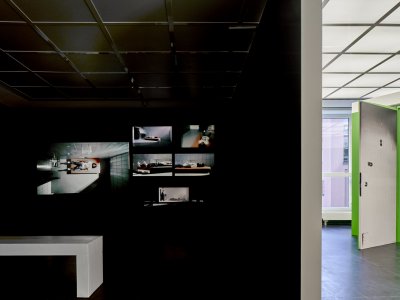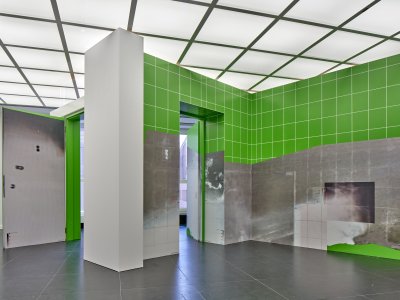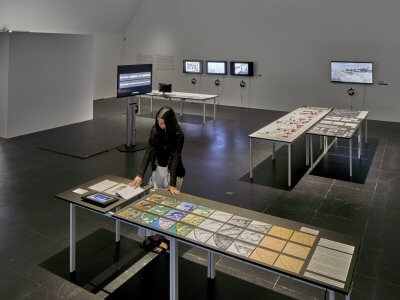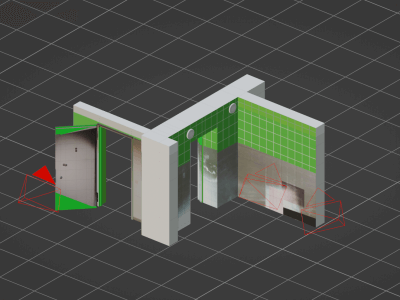Three Doors – Forensic Architecture/Forensis, Initiative 19. Februar Hanau, Initiative in Gedenken an Oury Jalloh
03.06.2022 — 11.09.2022
In memory of the nine victims of the 19 February 2020 racist terror attack,
Ferhat Unvar
Hamza Kurtović
Said Nesar Hashemi
Vili-Viorel Păun
Mercedes Kierpacz
Kaloyan Velkov
Fatih Saraçoğlu
Sedat Gürbüz
Gökhan Gültekin
in memory of
Oury Jalloh
and in memory of all victims of racist violence.
AN INTRODUCTION
Under the title Three Doors – Forensic Architecture/Forensis, Initiative 19. Februar Hanau, Initiative in Gedenken an Oury Jalloh, the Frankfurter Kunstverein has invited the research agencies Forensic Architecture and Forensis to jointly develop an exhibition from 2 June to 11 September 2022, in which three new works by Forensic Architecture and Forensis are presented. Their visual investigations into the 19 February 2020 racist terrorist attack in Hanau are the main focus of the show. A new plausibility study on the case of Oury Jalloh, who burned to death in a police cell in Dessau in 2005, is also being presented. In addition, the exhibition highlights ongoing investigations, such as those into the NSU murders and international human rights violations, in order to illustrate a spectrum of forensic and imaging science methodologies.
The exhibition arose as a collaboration between various parties: the research agency Forensic Architecture, its affiliated agency Forensis Berlin, Initiative 19. Februar Hanau, Initiative in Gedenken an Oury Jalloh, journalists and documentarists, and the cultural institution Frankfurter Kunstverein. They work as a coalition of civil society forces and experts in various fields.
The Frankfurter Kunstverein becomes temporarily a sounding board for the work of countless people who, with their respective voices and means, have set in motion a collective search for truth. Remembrance, justice, clarification and consequences are the four central demands of Initiative 19. Februar Hanau; they also concern each and every one of us, forming as they do the basis for the cohesion of our democratic society. The coming together of people who defend their rights against institutional abuse, violence, and injustice unites individuals into an alliance, thereby establishing a political force that creates awareness and can generate change.
The exhibition Three Doors recruits artistic, visual, and investigative journalistic methods, as well as the voices of those affected, to provide a counter-narrative to the state’s official story about what happened in Hanau and Dessau, as well as to create visibility for the victims of racist violence and strengthen their rights. The exhibition spaces thus become a public forum for socio-political discourse about the creation of collective narratives, and engages the question of whose voices, whose perspectives, and whose points of view are being negotiated.
Three Doors adds on to an ongoing process of social transformation. It concerns issues of participation, belonging, and identity in an increasingly diverse society, in which all should equal in the eyes of the law, despite any form of racialisation, no matter what names we bear, or what cultural experiences we have. It engages questions about what kinds of society enable the participation of all of its members, who is responsible for making decisions, who occupies the public forums and disseminates views, and which criteria jurisprudence and accepted public opinion depend on.
THE INITIATIVES AND THEIR FIGHT FOR JUSTICE
On 19 February 2020, nine people were murdered in a racially-motivated terrorist attack in Hanau: Gökhan Gültekin, Sedat Gürbüz, Said Nesar Hashemi, Mercedes Kierpacz, Hamza Kurtović, Vili-Viorel Păun, Fatih Saraçoğlu, Ferhat Unvar, and Kaloyan Velkov. The relentless work of the families of the victims has created a radical change in public awareness and impact. Countless people, including activists, lawyers, and supporters from all parts of civil society, have joined forces with the victims’ families. In addition to their respective competences, all of these actors have brought their solidarity to the fight for truth and justice. Remembrance, justice, clarification, and consequences are the demands that the survivors, the victims’ families, and Initiative 19. Februar Hanau address to the state, to the police, and to German society.
In 2005, Oury Jalloh, a young asylum seeker from Sierra Leone, burned to death in a police cell in Dessau. Oury’s friends and family have long operated on the assumption that his death was not self-inflicted, but rather a homicide perpetrated in police custody. The Initiative in Gedenken an Oury Jalloh has been fighting for political and legal clarification of the case ever since. Together with many activists, the initiative keeps the memory of Oury Jalloh, and of police violence and structural racism, alive in the consciousness of the public.
In recent years, civil initiatives and communities of people affected by human rights violations and state, military, or corporate violence have emerged around the world. They call for a self-empowered, horizontal process of reviewing and producing evidence, anchored in civil society, as well as increased traceability of alleged incidents and more transparency about misconduct by state authorities. With the aim of changing the current situation, people are forming new coalitions through which they can make their voices heard, become visible, initiate change, and fight for their rights. Forensic Architecture works on their behalf, investigating human rights abuses using methods from imaging science and digital forensic analysis.
ON THE NECESSITY OF THIS EXHIBITION: RACISM, RIGHT-WING TERROR IN GERMANY, AND STATE FAILURE
The tragedy of Hanau, general social awareness about racism, the threat of violence from the political right, the systemic racism of the state, and the associated demands for clarification are currently playing a particularly important role in Hesse. At the same time, these are nationwide problems that are now the focus of the new federal government, and require institutional action and attention. Hanau was a turning point for many people who felt part of our society and then, perhaps because of their appearance or other prejudices, got a feeling of fear, a feeling that they do not belong. The feeling of not belonging destroys a lot, it makes it impossible to live together in mutual respect and to meet as equals.
The big question that concerns us all is how do we actually want to live in this country? How can we create a society that is willing to show solidarity? When it comes to creating a society based on solidarity, an essential task must be to fight racism. This task must lead to the center of society becoming active. Because this large majority fell asleep a few years ago. Or it remained in silence, perhaps in overwhelm and isolation, instead of standing up and taking on its tasks of implementing solidarity as a model of togetherness.
Today, the culture of discourse in our country is often determined by the loud and agitating speeches on the internet. By a language and a rhetoric that assigns contrary values to progressive terms. The extremist groups are the loudest. We seem to allow a culture of debate that is determined from the margins rather than from the centre of society. And the majority of society must reappropriate the sovereignty of public discourse: facts-based, differentiated, non-discriminatory and non-pejorative towards other people. Because that is what it means to live democracy.
Civil society and the victims of right-wing violence have taken the initiative to provide education and social mediation to the public. The methodical ignoring of right-wing terror by state authorities is a recurrent phenomenon in post-war Germany. The 2020 racist attack in Hanau is only one of a series of neo-Nazi attacks in Germany, including the 2019 attack in Halle, the murder of Walter Lübcke, the NSU terrorist campaign, and the 1980 Oktoberfest bombing. Time and again, attackers have been portrayed as lone perpetrators and the existence of organised networks has been denied, even when a recognisable system of references uniting the acts and the perpetrators can be discerned. The language, weapons, and patterns of action employed serve as codes and symbols for an attitude that is intended to cause violence, fear, and exclusion. Until the 1980s, the glorification of National Socialism, anti-Communism, and anti-Semitism could be regarded as the main motivation for right-wing terror. From the 1980s onwards, racism against migrantised people has played an increasingly important role.
Why was organised right-wing terror overlooked for so long? The breeding grounds for such ideology were long present in bourgeois spheres, but this was not articulated politically in public. It existed beneath the visible and overt surface. Racist and nationalist sentiments were boosted, instead, by the increasingly loud and public pronouncements of right-wing and ultra-conservative parties.
The lack of awareness-raising and intervention by the state led many members of civil society to progressively lose trust in the government and its institutions, as well as in the sciences and media – the result of post-democratic shifts in power. The methodical dissemination of “alternative facts” and the manipulation of reality by (international) interest groups – mainly those on the right-wing spectrum – are shifting facts and fragmenting opinions.
Representatives of the federal government and the federal states are under increasing public pressure to face the fact that there is an increased danger of right-wing terror, extremism, and racism in Germany. Therefore, it is important to address and analyse structural discrimination and racist violence. The failures of some authorities or officials, and the potential continuities between these incidents and the official ways of dealing with racism in Germany, have led to calls for transparent and critical reassessment. Racism is both a political and a social problem.
THE FRANKFURTER KUNSTVEREIN
The Frankfurter Kunstverein is not only an exhibition venue, but also a co-producer of the new investigations undertaken by Forensic Architecture/Forensis, Initiative 19. Februar Hanau, Initiative in Gedenken an Oury Jalloh. The Frankfurter Kunstverein is an independent institution that was founded in 1829 by citizens of the Free City of Frankfurt as an expression of the self-determination of people who, in the era of the German unification and freedom movement, established a place that was not committed to any state-governed or elitist understanding of art, but rather understood itself as a self-determining and experimental space for contemporary culture. To this day, the Frankfurter Kunstverein operates on the basis of this institutional self-conception. We remain committed to its mandate as a place for critical reflection on the present moment, on the here and now in society, and on the human condition. We do so without temporal distance and through the gaze of artists and academics, all of whom contribute to our reading and understanding of the flood of knowledge, facts, and images. Through the power of sensory experience in space, information and knowledge can also become perceptual here, allowing for a constant re-exploration of the fragmented, multi-perspectival narrative of what reality can be.
With Three Doors, the Frankfurter Kunstverein once again takes up the long-standing challenge of pushing beyond the boundaries of specialist contexts. The current social and political conditions require new ways of working from art institutions, too. Through their cultural work, they pursue a multi-perspectival approach to the defence of democratic structures and the strengthening of our civil-society values.
The exhibition also poses the overarching question of whether to expand the role of art and cultural institutions, whether to leave the purely metaphorical and symbolic level in order to participate in the real democratic process. In the course of production, the curatorial team repeatedly faced the challenge of networking people from completely different spheres of expertise with each other, so that new insights and new kinds of social action could emerge through the formation of new coalitions.
ABOUT FORENSIC ARCHITECTURE
Forensic Architecture is a research agency founded in 2011, internationally renowned for years in the arts and culture sector. The collective uses methods and technologies that analyse the traces that state violence leaves on architecture and landscape. They don’t design buildings so much as examine the overarching politics of space, particularly how it is manipulated by states and corporations at the expense of civilians and the environment.
Forensic Architecture works exclusively on behalf of civilian victims, citizens’ initiatives, NGOs and independent associations, legal forums, human rights groups, activists, investigative journalists and media, and art and cultural institutions. Together with the European Center for Constitutional and Human Rights (ECCHR), Forensic Architecture founded the research centre Investigative Commons in Berlin.
The collective’s artistic work is characterised by the use of cutting-edge spatial and architectural analysis techniques, such as remote sensing, 3D modelling, open-source investigations, geomapping, digital reconstructions, and immersive technologies, as well as investigative research, situated interviews, and scientific collaboration. Sophisticated technologies are used to gather objective facts about grievances.
This allows traces that are otherwise imperceptible to the public to be contextualized and made visible. A forensic aesthetic of imaging investigation is created. Through these methods, as well as the use of materials like metadata from phone calls and videos shot on mobile phones, meteorological data, satellite images, eyewitness accounts, and motion reconstructions, a combination of physical and virtual space can be created, and new perspectives and evidence can emerge. Each of the projects – called “investigations” by Forensic Architecture – reproduces facts about actual occurrences, and enables the search for plausible evidence by deduction.
This is an ongoing, collaborative, research-based, and politically engaged practice, in which facts and evidence are developed collaboratively through interdisciplinary work in architecture, journalism, law, and science. They emerge as a result of a coalition of civil society actors, and as a counter-investigation to those investigations led and answered for by authorities or the state. Forensic Architecture describes this process as an open and horizontal form of fact-checking, which is why the collective calls its work “counter-forensics” Counter-forensics is a practice of epistemological – that is, knowledge-generating – counter-investigation.
The results of the investigations are not only exhibited in the protected spaces of international cultural institutions for the purpose of counter-fact-finding; over the years, visual plausibility studies and evidence have also increasingly been brought into court proceedings by lawyers.
Official, governmental, and public authorities, as well as power-exerting corporations, have long held a monopoly on the interpretive authority of social narratives and (un)truths, while at the same time controlling the processes by which laws and interpretations are determined for civil society and citizens. But a shift is underway – one through which civil society will no longer need to rely on state authorities, but can challenge and counterbalance them through free and independent examination.
WHY IS THIS ART?
The Frankfurter Kunstverein is a place for art on the threshold to other disciplines and society. An art institution where novel and innovative narratives emerge through artistic practices and expanded ways of thinking, which can then influence social discourse.
When images, data and information are visualised in light of the latest scientific methods and categories, these technological applications are no longer exclusively accessible to experts, such as forensic scientists, crime experts, judges, and lawyers. Instead, they offer all citizens the opportunity to participate in the verification of facts. Forensic architecture enables independent investigations to be carried out into human rights violations, for example, or racist terrorist incidents, or ecocides. Through the dissemination of this work, institutional space becomes a point of reference, a place of reminders, and a forum for discussion about the interpretations of concrete events.
By collecting, reviewing, and reassembling data and facts, such space enables the emergence of altered perspectives by which we can interpret the world. Forensic Architecture has developed an imaging science practice that recruits information that is already publicly available, but which can then be re-analysed, interpreted, and tested for plausibility, thus creating a counter-narrative to official interpretations. That is why their work is presented in both exhibition halls and courts of law.
This artistic practice involves combining science, journalism, documentary film, and architecture in the service of a project of social mediation accessible to all. A new art form whose truthful content can also be used as evidence of state misconduct and failure.
With Three Doors, we present an exhibition where contemporary art occupies the border between activism and science. The works of Forensic Architecture arise from concrete incidents and motivations, and are not merely artistic metaphors or symbols. Forensic Architecture’s practice exhibits a radically different stance than that which is often associated with “art” and “culture” by mainstream media and the art market, and always triggers controversy about whether it can be called art.
This is not art in the classical sense. But it is an interrogation into the freedom of art in its confrontation with power structures that are responsible for violence and destruction. The exhibition of their projects, films, images, and installations is only one aspect of Forensic Architecture’s work. Their artistic self-conception extends to academic teaching, mediation and outreach, collaboration with experts, and ongoing research. One important aim of the research agency is to bring about political change.
Curatorial Host: Franziska Nori
Direktorin Frankfurter Kunstverein
#threedoorsFKV #saytheirnames #ouryjallohdaswarmord

